I’m one of those people who look at the ground when they hike, not to see where I’m going but to scout out rocks. At the beach, I scour the wrack line for shells and other treasures the tide has washed ashore. I’ve collected rocks, shells, nests, and bones from all my travels, including to big cities where artifacts of the natural world are harder to find.
In my memoir A Bushel’s Worth: An Ecobiography, I wrote about childhood memories of my grandparents’ farms and the mementos I gathered during summer vacations there:
“As a young girl, I was a rock hound and my grandparents’ farmyards were my stalking grounds. I scouted petrified wood, round picture agates, and red and gold siltstone flinted like arrowheads, bringing a pailful home to Colorado each summer to polish in my tumbler on the tool bench in our garage. For years, I kept a small dark brown stone, like magma from the earth’s core cooled in the swirled shape of a horse’s head and mane. My Grandma and Grandpa Smith’s neighbor shared pieces of larger rocks he’d gathered on his own farm and from forays in that region. One was a polished oval picture agate, a horizon of shadowed trees landscaped across a champagne sky. Decades later, I had it edged in spiraled sterling with a silver chain, a memento in miniature of the land I’d left behind.”
Now on my travels, I’m more likely to take photographs than artifacts. Still, the fascination is the same. I’m trying to understand my place in the ecosystems that remain. Perhaps because I spent childhood vacations on my grandparents’ farms, built environments don’t satisfy and comfort me the way natural systems do. What I’m searching for, I think, are the ways my body and my writing are connected to the earth.
We live surrounded by human-made things—objects made of plastic, metal, and fabric shaped through mechanization. Even though these materials may have started out in some natural form, the consumer items they produce are artificial in that each is exactly like the other.
Shells and rocks, pinecones, feathers, and bark all share one attribute: none of them is exactly like another but instead vary in magnificent and intimate ways. Each carries a unique trace—or memory–of the world it inhabits.
Writers, too, want to create a unique record of their experiences in the world around them. Some use writing to understand and describe their place within a particular ecosystem or encircling planet. Nature’s artifacts can serve as reminders of experiences or relationships with the natural world, helping to create stories of what Thoreau called “something kindred” between humans and nature.
In a workshop I taught in Colorado, an outdoor adventurer wrote of his obsession with heart-shaped rocks. He carried them home from all corners of the world and kept them piled on shelves like cairns marking a trail, yet he wasn’t sure why he collected them. It wasn’t until he showed us the only picture he had of his mother, who had died when he was very young, that the heart came into view in the shape of his mother’s face. There we saw the heart that had been beating for and in him through the rocks he’d carried home, a memory captured in stone.
Stories like this illustrate how the distinction between humans and the natural world is finer than we think. From cells to bones, we all carry within ourselves some trace of our ecological origins. Through writing, we can examine the world around us for the juxtapositions that complexify the distinction and, in turn, forge new understandings of our place within this ever-changing world.
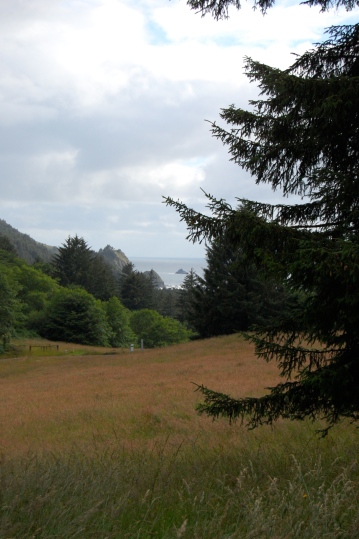 I’ll be helping writers explore this rich terrain in a workshop at the Sitka Center for Art and Ecology on the Oregon coast, September 27-28. Bring a natural artifact or image of your own to inspire writing from poetry to fiction to environmental advocacy amid the beauty of the Sitka campus.
I’ll be helping writers explore this rich terrain in a workshop at the Sitka Center for Art and Ecology on the Oregon coast, September 27-28. Bring a natural artifact or image of your own to inspire writing from poetry to fiction to environmental advocacy amid the beauty of the Sitka campus.

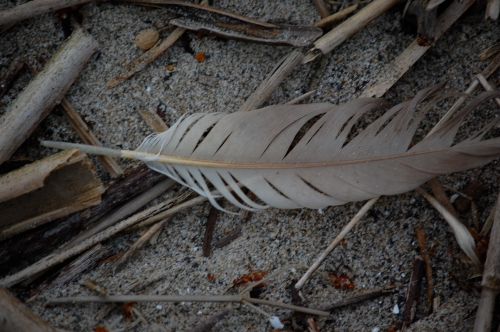
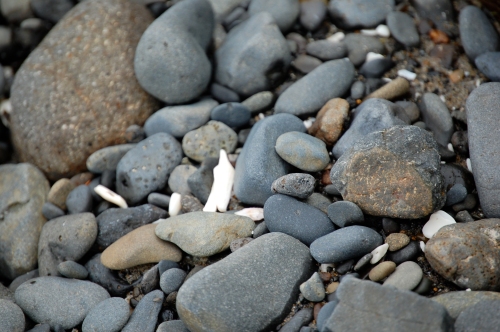
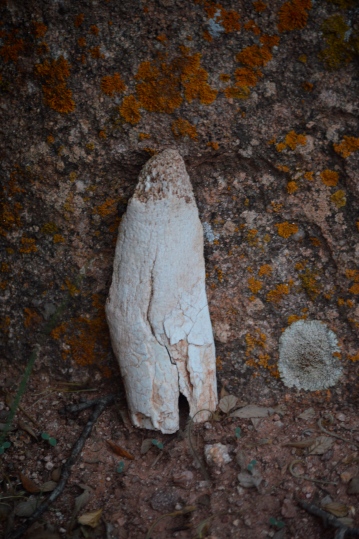
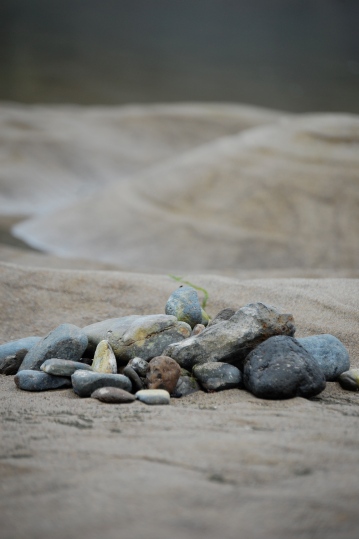




I am heartened to know I am not the only walker who looks about my path before taking the next step. What marvels are overlooked if the pace is too fast and the gaze too far off.
Really nice photographs with a character much different from many of your other posts: darker, more brooding, intimate. I’m glad you’ve picked up many oddly shaped things over the years.
I love stones and shells, especially the surprising, tortured ones, remnants of the ravages of nature. Those are the ones with character.
Love it! I am laughing because my daughters (my son collects everything too)and my husband, over many years have said: “you aren’t going to take all those things home are you?” Why yes I am. I love my rocks, drift wood and shells that I have collected over the years…best souvenirs ever! Love this post because I can so relate…it was really hard not to pick up some petrified wood from one trip but I obeyed the rules and did not take one thing from there…lol